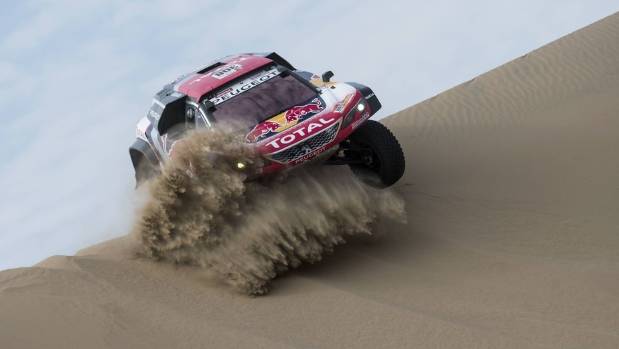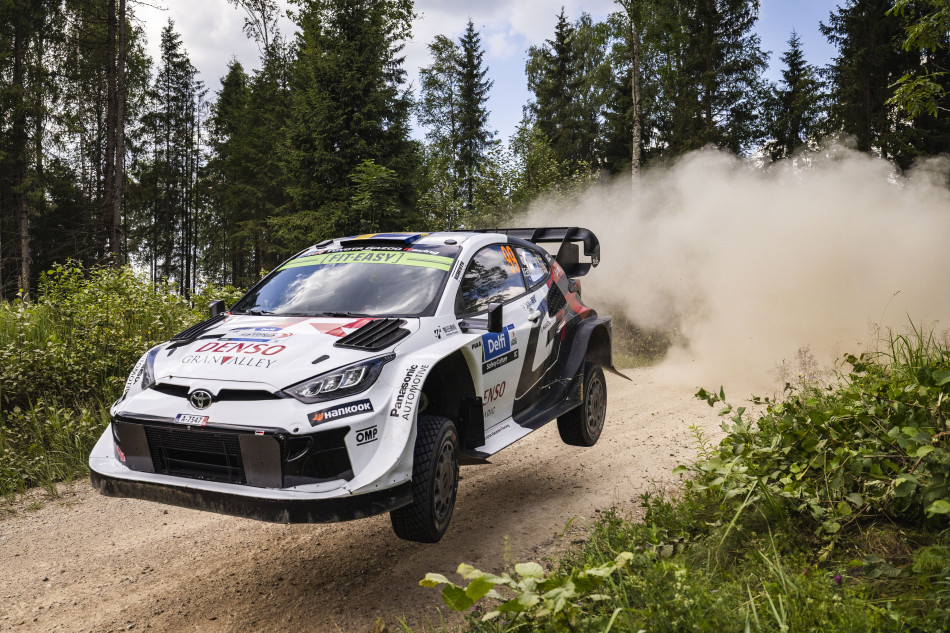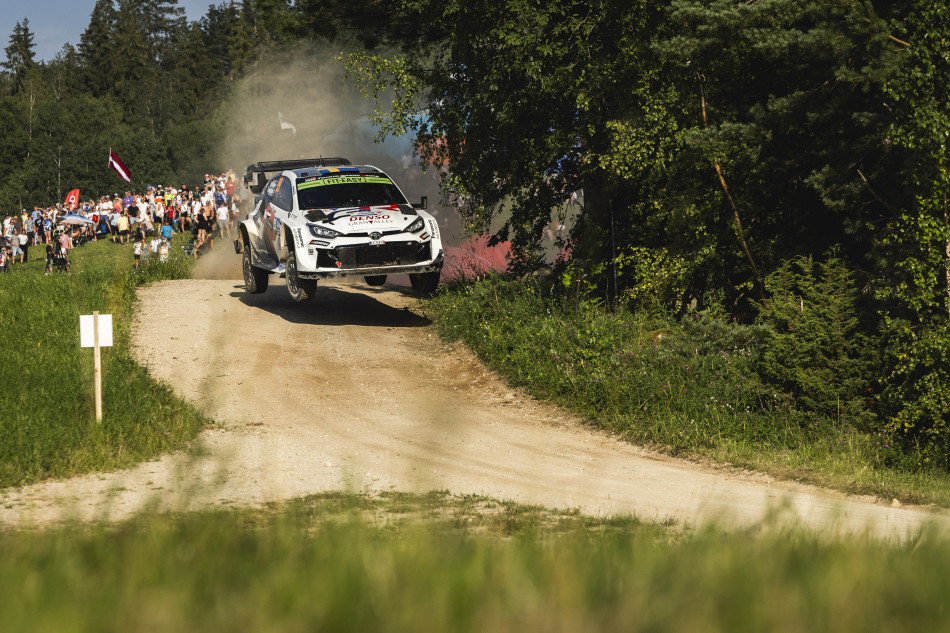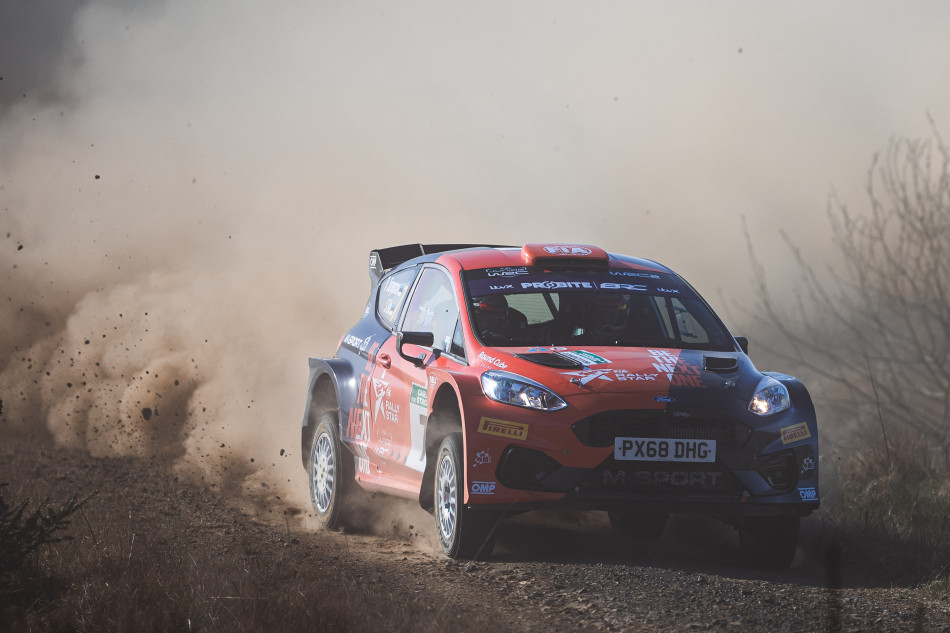
Few people would argue the Dakar Rally is the toughest motor racing event in the world.
The Rally Raid requires teams to tackle more than 5000km of competitive driving (plus another 4000km of liaisons between the special stages) across two weeks of action. Although historically based in Africa, the Dakar Rally is celebrating 10 years in South America. The 2018 course will travel through Peru, Bolivia and Argentina.
This year teams aren’t allowed maps, just the GPS navigation units in the car and the stages feature more sand dunes than ever before in the South American history of the event – making it an even greater challenge than ever before.
FRANCOIS FLAMAND/RED BULL
The Peugeot 3008 DKR Maxi of the Team Peugeot Total driving through the dunes during stage 2 of the Dakar Rally on January 7.
The event attracts the best off-road racing talent in the world, including former World Rally champions Sebastian Loeb and Carlos Sainz, US off-road ace Bryce Menzies and the man they call ‘Mr Dakar’, Stephane Peterhansel – a 13 time winner of the event on both bikes and cars.
READ MORE:
* Andre Villas-Boas quits football to drive Dakar Rally
* Nissan’s iconic 1987 Paris-Dakar rally car rides again
* Mustang V8s in Dakar Rally Ford Rangers
To conquer the gruelling terrain – a mixture of sand dunes, gravel roads and rocky landscapes – in searing South American summer requires a tough vehicle. That is why Peugeot, Mini and Toyota have developed machines specifically for the Dakar Rally and the challenges it presents.

MARCELO MARAGNI/RED BULL
Bryce Menzies of MINI X-Raid Team races during stage 01 of Rally Dakar 2018 from Lima to Pisco, Peru on January 06, 2018.
PEUGEOT 3008 DKR MAXI
This is the French brand’s swansong in the Dakar Rally with its current buggy program that began four years ago. Peterhansel leads the team as it and he looks for a third consecutive win in the marathon. Loeb, Sainz and former biker winner Cyril Despres drive the four factory Peugeot 3008 DKR Maxi.
Although the buggy carries the ‘3008’ name it has nothing in common with the road car, beyond the Peugeot badge. The purpose-built machine is powered by a twin-turbo diesel engine mounted behind the driver and navigator.

FRANCOIS FLAMAND/RED BULL
Carlos Sainz and Lucas Cruz in the Peugeot 3008 DKR Maxi of the Team Peugeot Total driving through the dunes during stage 2 of the Dakar Rally, between Pisco and Pisco, Peru, on January 7, 2018.
Peugeot opted for a rear-wheel drive configuration for its Dakar challenger, forsaking the traction benefits of four-wheel drive for the extra suspension travel and bigger tyres allowed for two-wheel drive entrants.
Despite back-to-back wins Peugeot hasn’t rested on its laurels and has widened the 3008 DKR for 2018 for better stability across the variety of conditions it will face.
MINI JOHN COOPER WORKS BUGGY

FLAVIEN DUHAMEL/RED BULL
Giniel de Villiers (ZAF) of Toyota Gazoo Racing SA races during stage 1 of Rally Dakar 2018 from Lima to Pisco, Peru on January 6, 2018.
If you can’t beat ’em, join ’em. That’s the German X-Raid team’s attitude to Peugeot’s recent success.
The long-time BMW and Mini supported team won Dakar four times between 2012 and 2015 with its all-wheel drive Mini Countryman-based machine. However, Peugeot’s recent success with its two-wheel drive buggy has inspired X-Raid to build a Mini-based buggy of its own.
Like the Peugeot, the Mini John Cooper Works Buggy may wear the badge of the British brand but in reality it is a custom-made off-road racer for Dakar.
While there are some styling cues to the Mini Countryman, the JCW Buggy features an aerodynamic-shaped body designed to help it across the dunes.
Under the bodywork is the same BMW-sourced 3.0-litre turbo diesel that has proven a reliable performer in the all-wheel drive Mini Countryman over the past six years.
TOYOTA HILUX GAZOO
The Japanese giant is sticking to the traditional Dakar success formula – all-wheel drive.
Three highly-modified Hilux have been entered by Toyota Gazoo Racing South Africa, a team with plenty of experience in the event.
The team is led by former Dakar winners Giniel de Villiers and Nasser Al Attiyah; the latter was the last man to win the race before Peugeot (driving a Mini Countryman in 2015).
Unlike its diesel-powered competitors the HiLux is motivated by a naturally-aspirated V8 petrol engine, which thanks to regulation changes for 2018 has more power.
The HiLux is lighter than previous years and the suspension has been redesigned to make it more capable of conquering the sand dunes on this year’s course.
– Sydney Morning Herald
Source :Stuff.co.nz






















